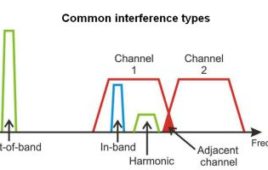Will 5G be lethal?
Peruse a certain kind of website these days and you’ll find warnings about the lethality of RF transmissions in the frequency ranges slated for 5G networks. One site quotes Devra Davis, director of the Board on Environmental Studies and Toxicology of the U.S. National Research Council, who warns that our sweat glands act as antennas for 5G wavelengths and 5G wavelengths have never been tested for health effects. Another points to an IEEE paper by Om Gandhi, chair of the EE Dept. at the University of Utah, who found that a large number of cell phones can emit 11x the US FCC radiation limit and three times the European/ICNIRP limits. Yet another webpage shrieks that 5G uses nearly the same frequency as weaponized crowd control systems (96 GHz).
Of course, it’s easy to find fringe websites warning about all sorts of health issues, and it appears that health issues concerning 5G are no exception. But some of the claims these sites make has questionable scientific underpinnings. For example, when sciencebasedmedicine.org examined claims about harm from cell phone radiation, it found that virtually none of the harmful “effects” had been reproduced in follow up studies. It also found evidence that proponents of theories about harmful cell phone radiation misstate the findings of key studies that have found cell phones cause no harm.
That brings us to Gandhi’s IEEE paper. His group examined SAR (specific absorption rate) test data for 450 cell phones that were held in contact with the human body. SAR tests quantify the magnitude and distribution of electromagnetic energy that biological objects absorb when exposed to RF fields. Gandhi thinks these close-contact tests approximate the way most people use cell phones though manufacturers now recommend phones be held 5, 10, or 15 up to 25 millimeters (about an inch) from the body.
Gandhi has a point. I can’t ever recall being told when purchasing a cell phone that I should keep it an inch away from my skin.
One thing is clear: SAR tests are likely to become increasingly important and potentially controversial as 5G gear proliferates. So it’s useful to take a closer look at the tests themselves. For that, we spoke with Bryan Taylor and Nicholas Abbondante, both engineers at Intertek Group plc, an independent test lab that, among other things, runs SAR tests. The tests use a “phantom” filled with a liquid that simulates the electrical qualities of the human head or body. Hall-effect magnetic probes measure SAR in watts-per-kilogram of tissue.
The Intertek engineers say the FCC SAR levels can be tough to meet. They estimate that only about half the equipment they test passes the first time. When there’s a problem, it is usually because a portion of the device other than the antenna radiates energy.
Additionally, manufacturers that have been through SAR testing develop a bag of tricks to help mitigate difficulties, the engineers say. One example: Designing the chassis to keep the RF transmitter farther away from the human user.
The Intertek engineers also point out that manufacturers increasingly design-in proximity sensors to detect when the RF antenna is too close to a human. Tablets, for example, generally employ these sensors to either reduce the RF output from specific antennas or switch it off completely when a user puts the tablet on their lap.
The jury is still out on what levels of 5G RF energy can be considered safe for humans and at what distances. But you can probably expect to see a lot more measures aimed at squelching RF output when humans are close by.
LELAND TESCHLER
EXECUTIVE EDITOR
Filed Under: Wireless • 5G and more, DIGITAL ISSUES • DESIGN WORLD, DIGITAL ISSUES • EE WORLD




